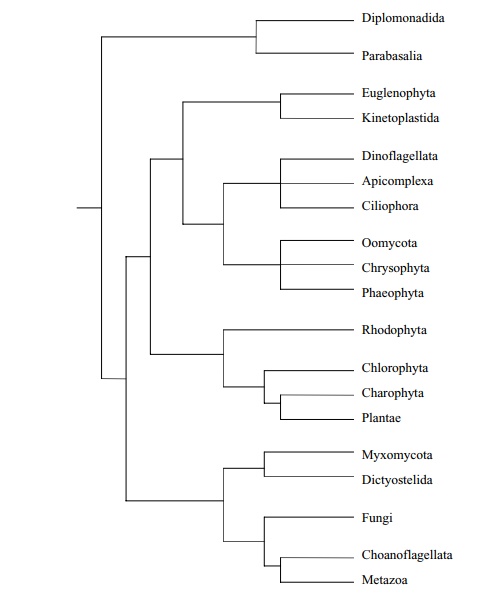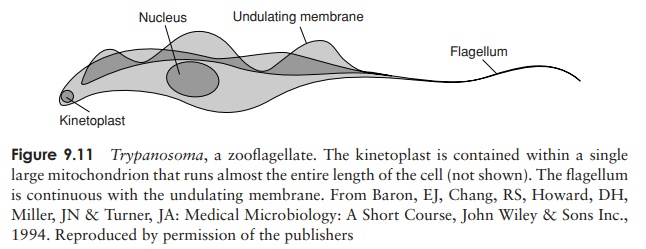Chapter: Essential Microbiology: Protista
Protozoa
‘The Protozoa’
The name Protozoa comes from the Greek, meaning
‘first animal’, and was originally applied to single-celled organisms regarded
as having animal-like characteristics (multicellular animals were termed
Metazoa). Proto-zoans as a group have evolved an amazing range of vari-ations
on the single-celled form, particularly with respect to the different means of
achieving movement. They are a morphologically diverse group of well over 50
000 species; although the majority are free-living, the group also includes commensal forms and some extremely
im-portant parasites of animals and humans.
Most protozoans are found in freshwater or marine
habitats, where they form a significant component of plankton, and represent an important link in the foodchain.
Although water is essential for the survival of protozoans, many are
terrestrial, living saprobically in moist soil.
Remember that a protozoan needs to pack all the
functions of an entire eucaryotic organism into a single cell; consequently a
protozoan cell may be much more complex than a single animal cell, which is
dedicated to a single function. The single cell is bounded by the typical
bilayer membrane discussed earlier, but depending on the type in question, this
may in turn be covered by a variety of organic or inorganic substances to form
anenvelope or shell.
One of the most characteristic structural features of
protozoans is the contractile vacuole,
whose role is to pump out excess amounts of water that enter the cell by
osmosis. The activity of the contractile vacuole is directly related to the
osmotic potential differential between the cell and its surroundings. This is
vitally important forfreshwater protozoans, since the hypotonic nature of their
environment means that water is continually entering the cell. The contractile
vacuole often has a star-shaped appearance, the radiating arms being canals
that drain water from the cytoplasm into the vacuole.
Most protozoans have a heterotrophic mode of
nutrition, typically ingesting par-ticulate food such as bacteria, and
digesting them in phagocytic vacuoles. Since they actively ‘hunt’ their food
rather than simply absorbing it across the cell surface, it is not surprising
that the majority of protozoans are capable of movement. The structural
features used to achieve locomotion (e.g. cilia, flagella) are among the
characteristics used to classify the protozoans.


We shall now examine the characteristics of the
principal groupings into which the protozoans have traditionally been divided.
It should be repeated, however, that the Pro-tozoa do not represent a coherent
taxonomic grouping with a common ancestor, but rather a phylogenetically
diverse collection of species with certain features in common. Indeed, each of
the four groups is now regarded as having a closer evolutionary rela-tionship
with certain ‘algal’ groups than with each other. See Figure 9.18 for a modern
view of how the various taxonomic groupings of protozoans are related.

Related Topics